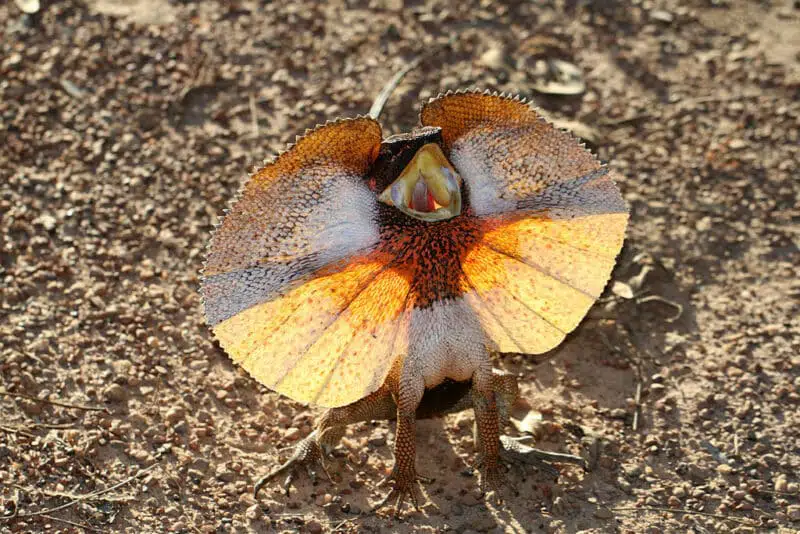They say beauty is in the eye of the beholder, but one thing is certain: not all creatures are cute and cuddly. Some animals are seriously strange-looking. Here we highlight ten of the weirdest looking animals!
1. Platypus
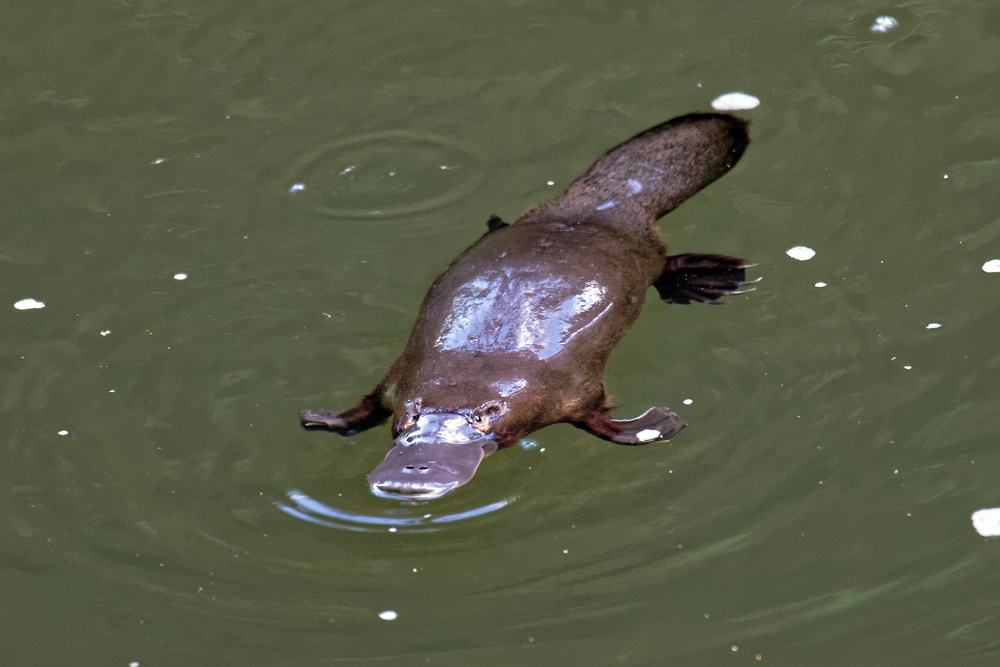
- Kingdom: Animalia
- Phylum: Chordata
- Class: Mammalia
- Order: Monotremata
- Family: Ornithorhynichidae
- Species: Ornithorhynchus anatinus
An Australian animal, the platypus, belongs to an order of mammals called monotremes (egg-laying mammals). European naturalists and scientists were once convinced that platypuses weren’t real after reading descriptions of their odd appearance.
This creature is well-suited to a semi-aquatic lifestyle. They have dense and waterproof fur and flat tails that make them well-adapted to swim in cold temperatures.
Platypuses’ hind feet are partially webbed as rudders, allowing them to steer through the water. The ear holes and the eyes that close as the animal dives are housed in the grooves behind its characteristic bill. Fat reserves are stored in the platypus’ tail, also used for digging and moving around.
Platypuses have horny spurs on their ankles that connect to a gland in their upper legs, making them one of the few poisonous animals worldwide.
Distinguishing features: short limbs, webbed feet, streamlined bodies, beaks, dark brown to reddish brown fur.
2. Komondor Dog
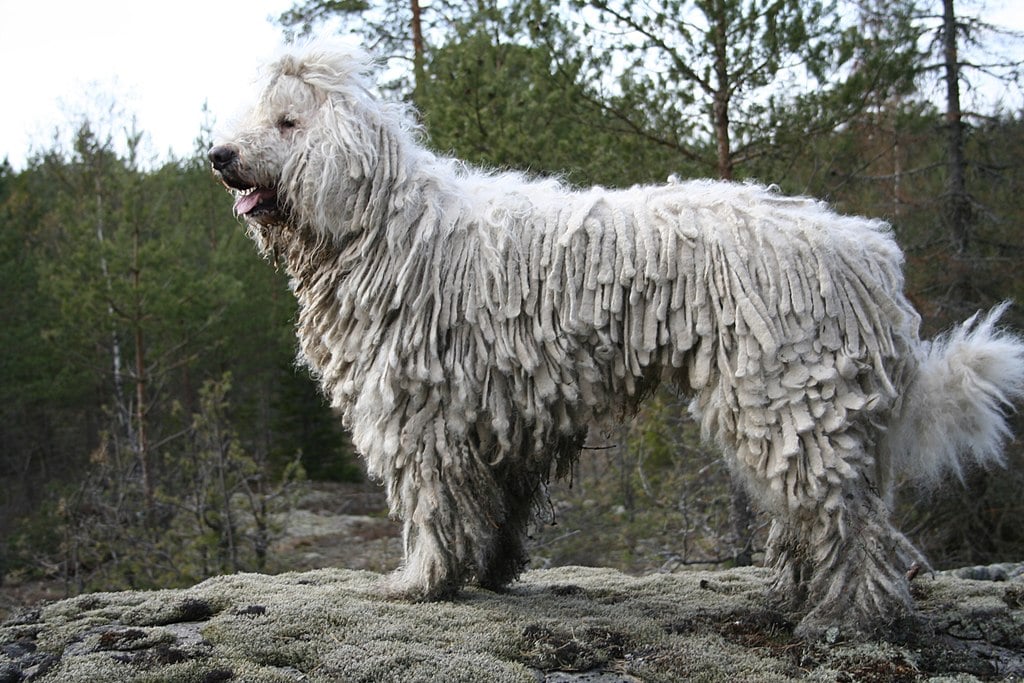
- Male: 80-100lbs lbs.
- Female: 70-80 lbs.
- Species: Canis lupus familiaris
Another weird animal is the Hungarian Komondor dog. They seem to have dreadlocks because of their white coats with white tassels.
With a medium-sized head and hair covering most of its facial characteristics, these dogs look like a mutt from the outside in. The torso is muscular, and the tail is perfectly straight.
Racka sheep from Hungary have similar floppy mop-like coats to shield them from predators and harsh weather. The dog’s white coat made it easy for him to blend in with the flocks of sheep around him. The fluffy coat of a puppy begins to mat between the ages of eight and ten months.
Komondors were bred to protect herds of farm animals, and so, they are naturally suspicious of strangers and protective of its kind. Today, Komondors are good friends and guard dogs for the humans they protect.
Distinguishing features: Floppy ears, matted fur
3. Frill-necked lizard
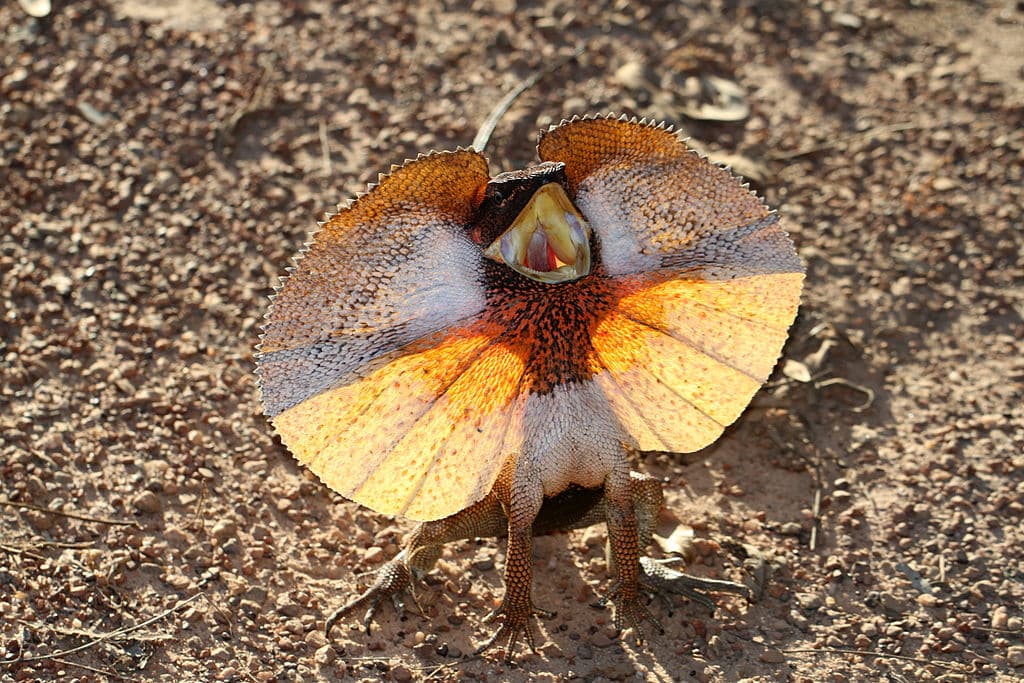
- Kingdom: Animalia
- Phylum: Chordata
- Class: Reptilia
- Order: Squamata
- Family: Agamidae
- Species: Chlamydosaurus kingii
Frill-necked lizards, also known as frilled dragons and “frizzy-necked agamas are endemic to Australia and New Guinea. They are the only species in their genus, Chlamydosaurus. The large neck frills give the creatures their name.
These lizards are tree-dwellers. Most of their meals are insects and tiny animals, such as flies, and on the rare occasion they may eat plants.
Their colors vary depending on their surroundings. Lizards that live in dry, clay-filled environments are more likely to show a variety of oranges, reds, and browns. In contrast, lizards living in wetter, more tropical environments are more likely to show darker browns, greys, and greens. Their colors are a sort of camouflage since they are tailored to their environments.
Distinguishing features: The ruff of skin covering the reptiles’ heads and neck is the most distinctive feature of these creatures. Long cartilage spines attach to their jaw bones and support the shape of the neck frills.
4. Echidnas
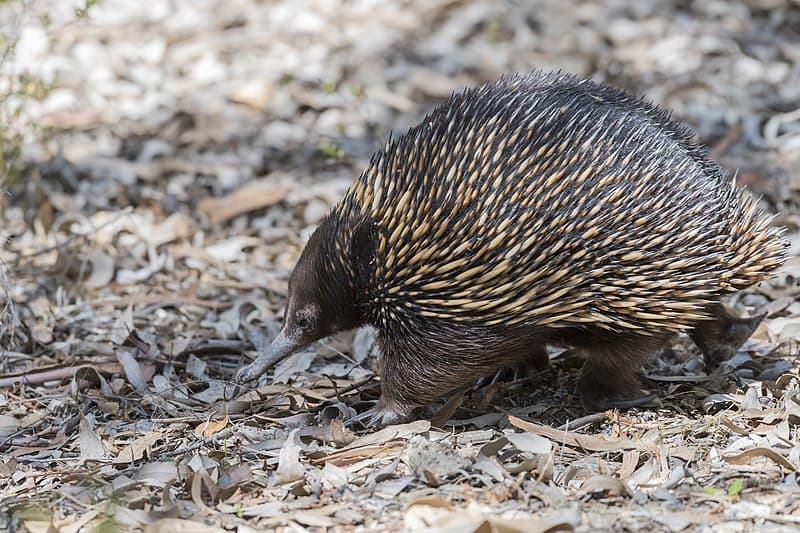
- Kingdom: Animalia
- Phylum: Chordata
- Class: Mammalia
- Order: Monotremata
- Family: Tachyglossidae
- Species: Tachyglossus spp.
The echidna, also known as the spiny anteater, is a member of a family of a family of quill-covered monotremes. In addition to the platypus, the four existing species of echidna are the only living mammals that lay eggs.
Echidnas are indigenous to Australia and New Guinea. They live in caves and fissures in rocks for protection from extreme temperatures and predators. A single echidna may share a huge territory with several other echidnas.
Distinguishing features: Quills, beaks, and webbed feet.
5. Aye-aye
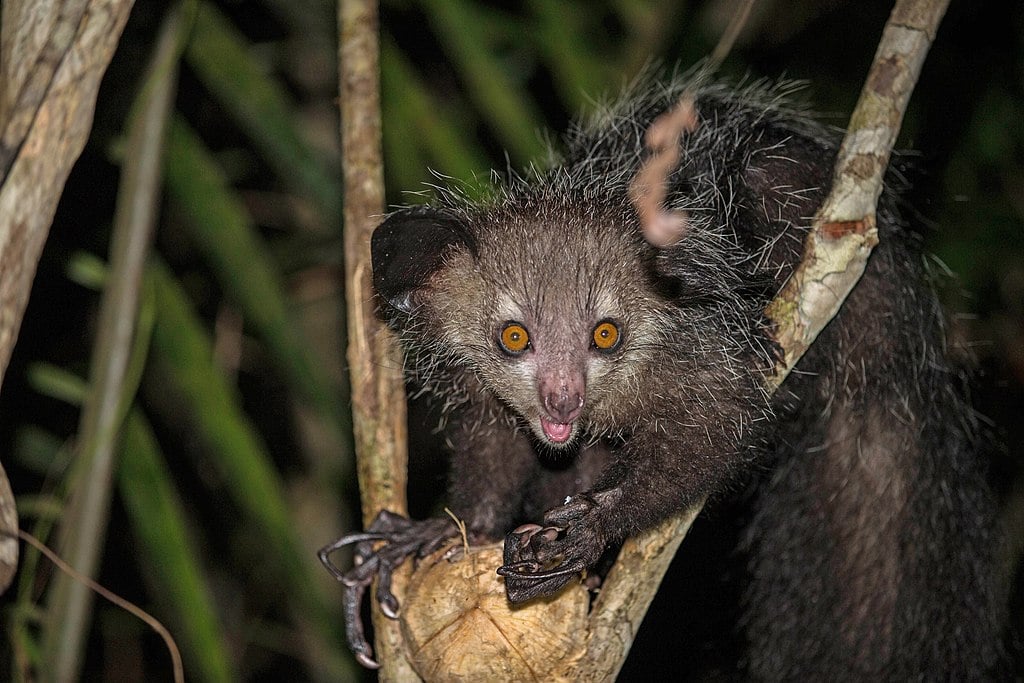
- Kingdom: Animalia
- Phylum: Chordota
- Class: Mammalia
- Order: Primates
- Suborder: Strepsirrhini
- Superfamily: Lemuroidea
- Family: Daubentonidae
- Species: Daubentonia madagascariensis
Aye-ayes are a type of primate. They are between 14 and 17 inches in length with long tails. They found only in Madagascar. Additionally, they have long, wiry, grey-black hair.
Their teeth never stop growing, similar to those of rodents. Like bats and squirrels, aye-ayes use echolocation to find their way around and can scale trees headfirst. They have large, glaring orange or tan eyes that are spherical. It also has a third finger to probe into holes it has dug with its teeth and grab grubs out of those holes.
People in the area don’t like an endangered species because they think it’s a demon and will kill it at any chance.
Despite their difficulty in keeping, Aye-ayes can be found in zoos all over the world. Some include Cincinnati, Philadelphia, and the Bristol Zoo in the UK.
Distinguishing features:
6. Axolotl
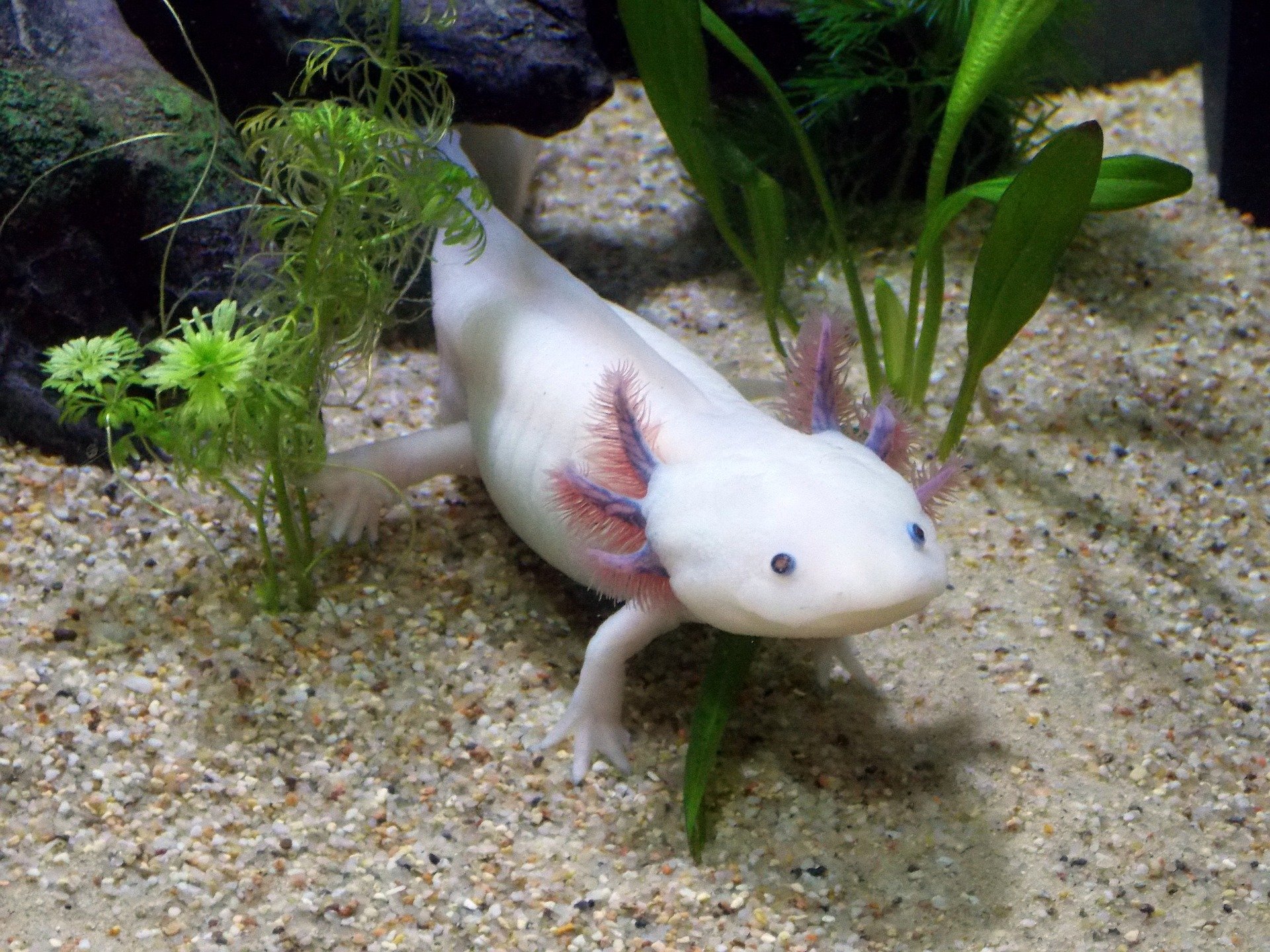
- Kingdom: Animalia
- Phylum: Phylum
- Class: Amphibia
- Order: Urodela
- Family: Ambystomatidae
- Species: Ambystoma mexicanum
The species was initially discovered in several lakes, including Lake Xochimilco, which is located beneath the Mexican capital of Mexico City.
In contrast to most other species of amphibians, axolotls do not go through metamorphosis to reach adulthood. Adults remain underwater and gilled rather than attempting to leave the water.
The axolotl can only be found in the valley of Mexico’s freshwater lakes, Xochimilco and Chalco. Flood control efforts resulted in the draining of Lake Chalco, and only the canals of Lake Xochimilco remain as evidence of their former selves.
It’s rare for the water temperature in Xochimilco to climb over 68 °F (20 °C), although it can fall as low as 43 °F (6 °C) in the winter.
In its Lake Xochimilco habitat, surveys in 1998, 2003, and 2008 showed 6,000, 1,000, and 100 axolotls per square kilometer, respectively.
A four-month-long hunt in 2013 failed to find any wild survivors; however, less than a month later, two wild ones were found in a canal network that flows from Xochimilco to the city.
Mexico City’s rapid expansion has significantly strained the natural world. According to the IUCN’s yearly Red List of endangered species, the axolotl is considered critically endangered.
Distinguishing features: They resemble salamander larvae at maturity with external gills and a long caudal fin, which are typically lost as a salamander develops into adulthood.
7. Hairy frog
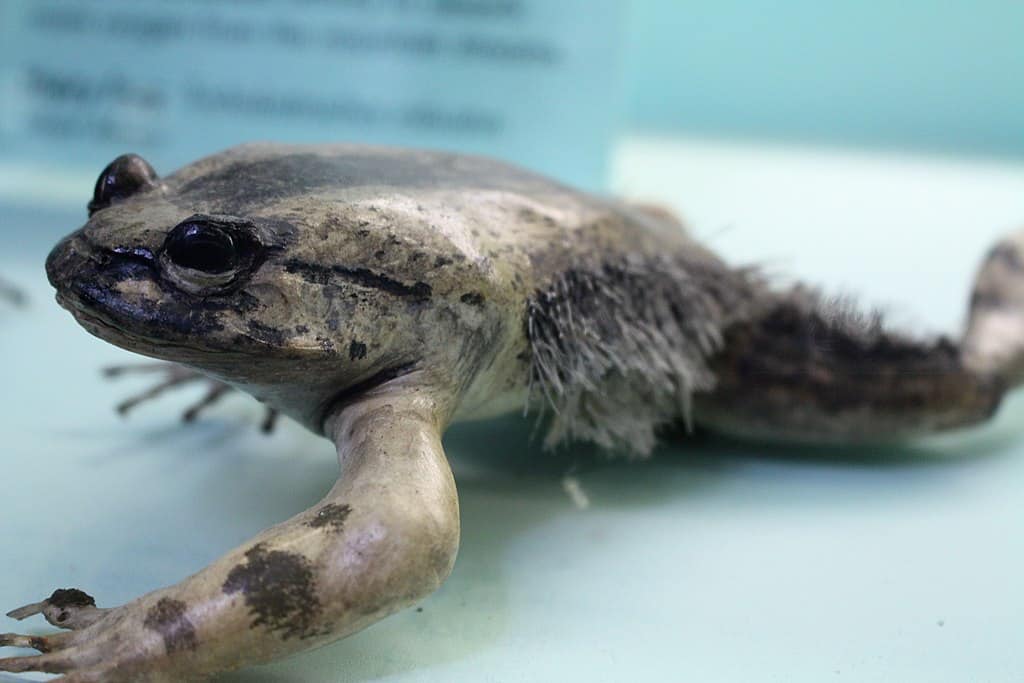
- Kingdom: Animalia
- Phylum: Chordata
- Class: Amphibia
- Order: Anura
- Family : Arthroleptidae
- Subfamily: Astylosterninae
- Species: Trichobatrachus robustus
Hair and fur are commonly seen on mammals and some insects but rarely on amphibians or reptiles. One exception is the hairy frog, commonly known as the wolverine or “nightmare frog.”
They get what looks like hair on their thighs and sides when they’re reproducing, which reaches about 4 to 5 inches (10–12 cm) long.
The frog’s dermal papillae are not hairs but dermal papillae with arteries that assist the frog in absorbing more oxygen. They work like the gills of a frog when it is a tadpole. Due to his role as guardian of his mate’s eggs, he will require additional oxygen once she has laid them.
These frogs have wolverine-like claws that can retract. The claws comprise bone and can only be everted if the frog destroys the bones in its toe and allows the claw to pierce through its skin.
Distinguishing features: “Hairs” on their body and retractable claws.
8. Pangolin
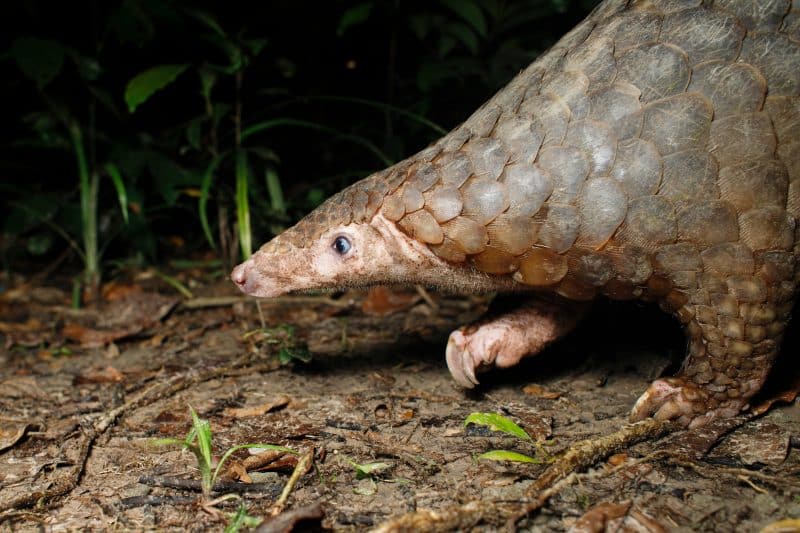
- Kingdom : Animalia
- Phylum: Chordata
- Class: Mammalia
- Mirorder: Ferae
- Clade: Pholidotamorpha
- Order: Pholidota
- Species: Manis, Phataginus, and Smutsia spp.
Pangolins, or scaly anteaters, are found in sub-Saharan Africa. They can grow up to 12–39 inches long (30–100 cm).
Pangolins are the only known mammals with these enormous protective keratin scales on their skin. Depending on the species, they may reside in burrows or hollow trees. In the night, pangolins hunt for termites and ants using their long tongues, which they use to catch prey.
One to three offspring often result from mating, and the mating rituals can last for around two years.
When a pangolin is a baby, it has soft scales that harden as it ages, giving it the impression of a plate-like appearance. These scales are very different from the scales of reptiles, which are made of keratin, which is the same material as human fingernails and tetrapod claws.
Distinguishing features: Scaly “armor.”
9. Okapi
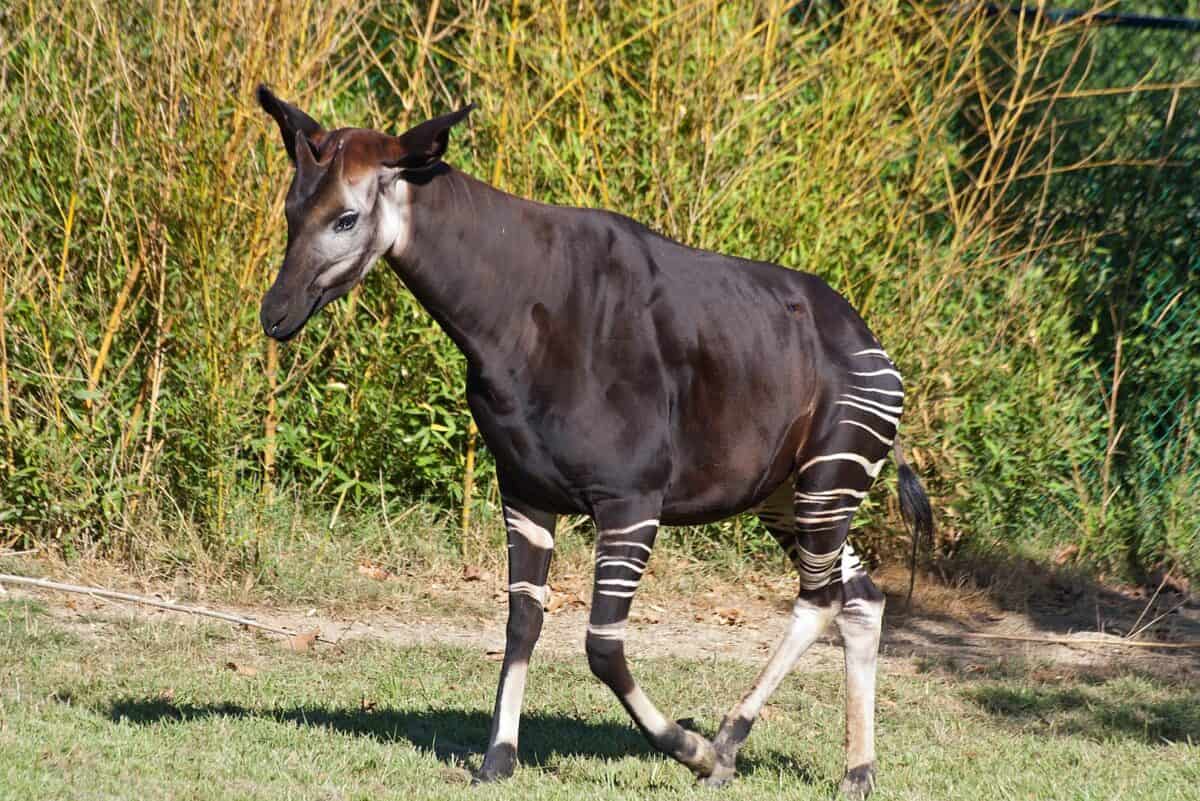
- Kingdom : Animalia
- Phylum: Chordata
- Class: Mammalia
- Order: Artiodactyla
- Family: Giraffidae
- Species: Okapia johnstoni
An endangered species of artiodactyl mammal native to the northeastern region of the Democratic Republic of the Congo (DRC), the Okapi, also referred to as the forest giraffe, Congolese giraffe, or zebra giraffe, is an endangered species.
Okapis have striped markings similar to those found on zebras, but they are more closely related to giraffes. They are the only two extant relatives of the Giraffidae family. While most okapis are active during the day, a few may be active at night.
They spend much of their time alone, only coming together to reproduce. All of the plants that Okapis consume are native to their area.
Males and females experience ruts and estrus regardless of the season. Estrus cycles recur every 15 days in captivity. A single calf is typically born at the end of a 440–450 day gestation period. Nurseries for juveniles are kept secret and only take place on an as-needed basis. Weaning occurs at six months for infants receiving solid food since they were three months old.
Distinguishing features: Long neck, chocolate to reddish brown coat, white horizontal stripes and rings on the legs, and white ankles.
10. Sponge
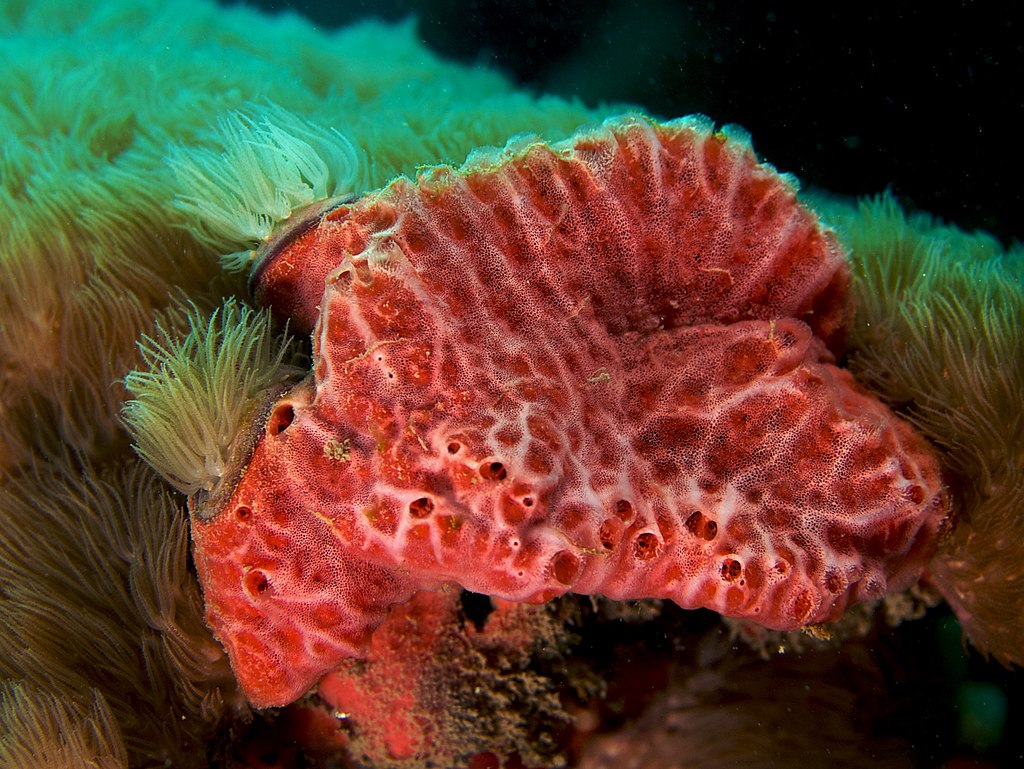
- Group: Colony
- Distinguish feature: Surface pores
- Habitat: Oceans, Lakes, Seas
- Diet: Omnivore
- Lifestyle: Sedentary (attached to a surface, e.g. rock)
- Location : Worldwide
The sponge is a marine invertebrate resembling a plant but is a marine creature. The sponge is so alien-looking that it can’t be considered a plant. This animal has no digestive system, consisting of channels and holes interspersed with cells of varying specializations.
A nervous system or brain is not present in this creature. It does not have a system for moving blood around the body like a human. It does not have any internal organs whatsoever. This organism can only survive because the ocean currents deliver it food and oxygen and remove waste.
Seven hundred fifty million years ago, sponges first broke apart from their common progenitor with the rest of animal kind. Spongiology, the study of sponges, is a relatively new field. No doubt, these are among the top 10 weirdest animals in the world.
Distinguishing features: Open chambers on their sedentary body, flagella (hair-like structures), soft and spongy “skin”.
Summary of the top 10 weirdest animals
Even though most of us have no idea how many different kinds of animals there are, some of us are pleasantly pleased to learn about some lesser-known species.
In all seriousness, how will you know every single one of the roughly one million non-insect animal species currently known to exist on the planet’s surface?
Would you like to read more about animals, have a look at our a guide to farm animals and top 10 endangered animals.
- Top 10 Cutest Fish in the World - April 15, 2024
- 10 Most Endangered Animals - April 15, 2024
- 16 Top Predators in the Food Chain - April 12, 2024

